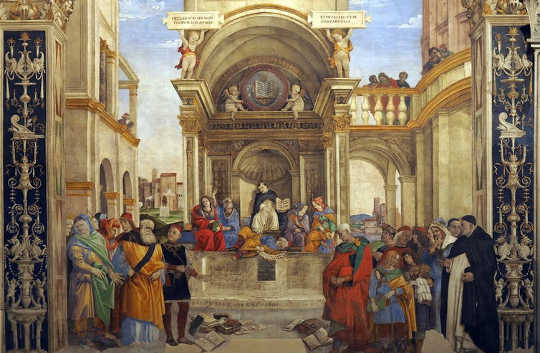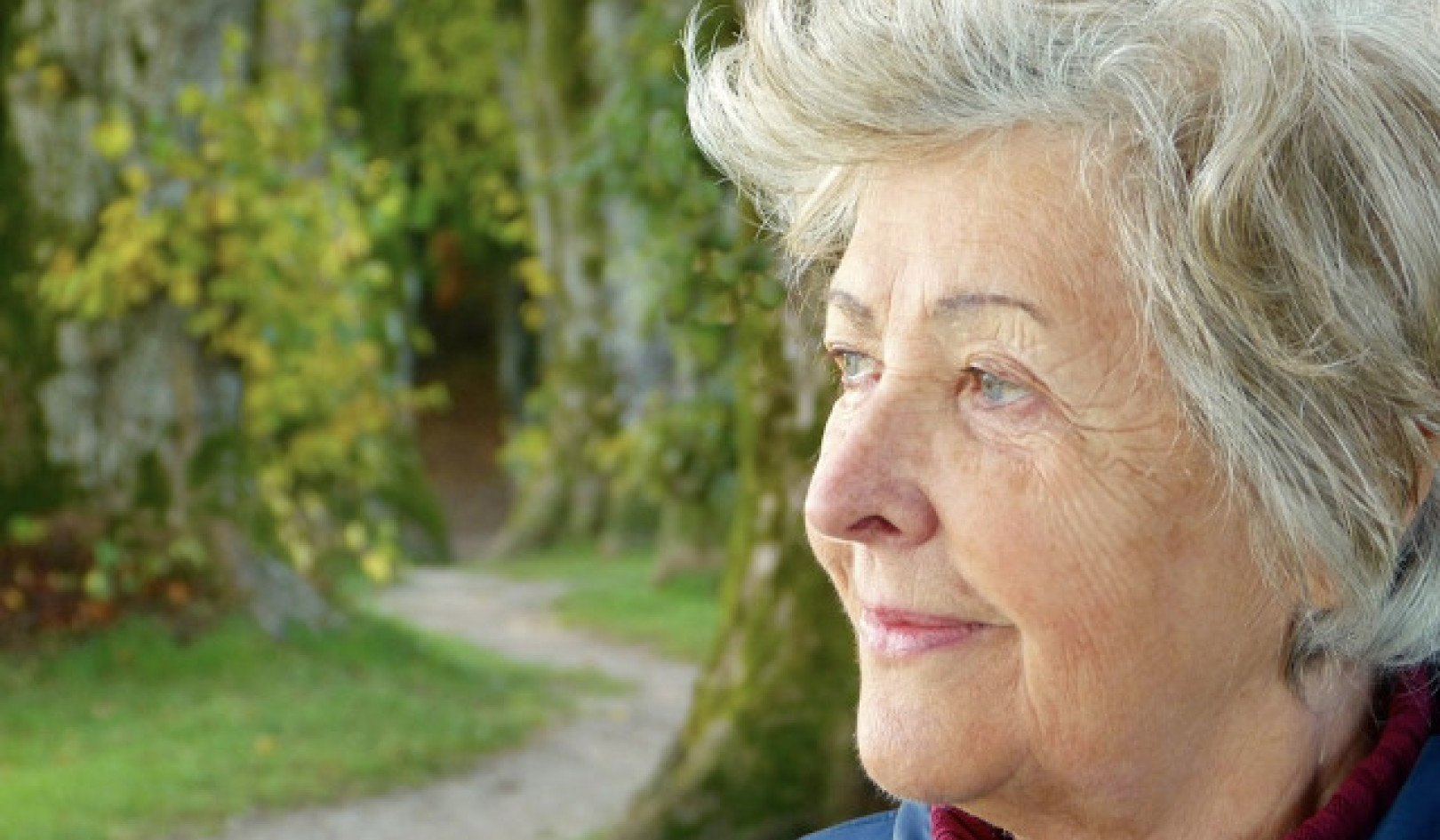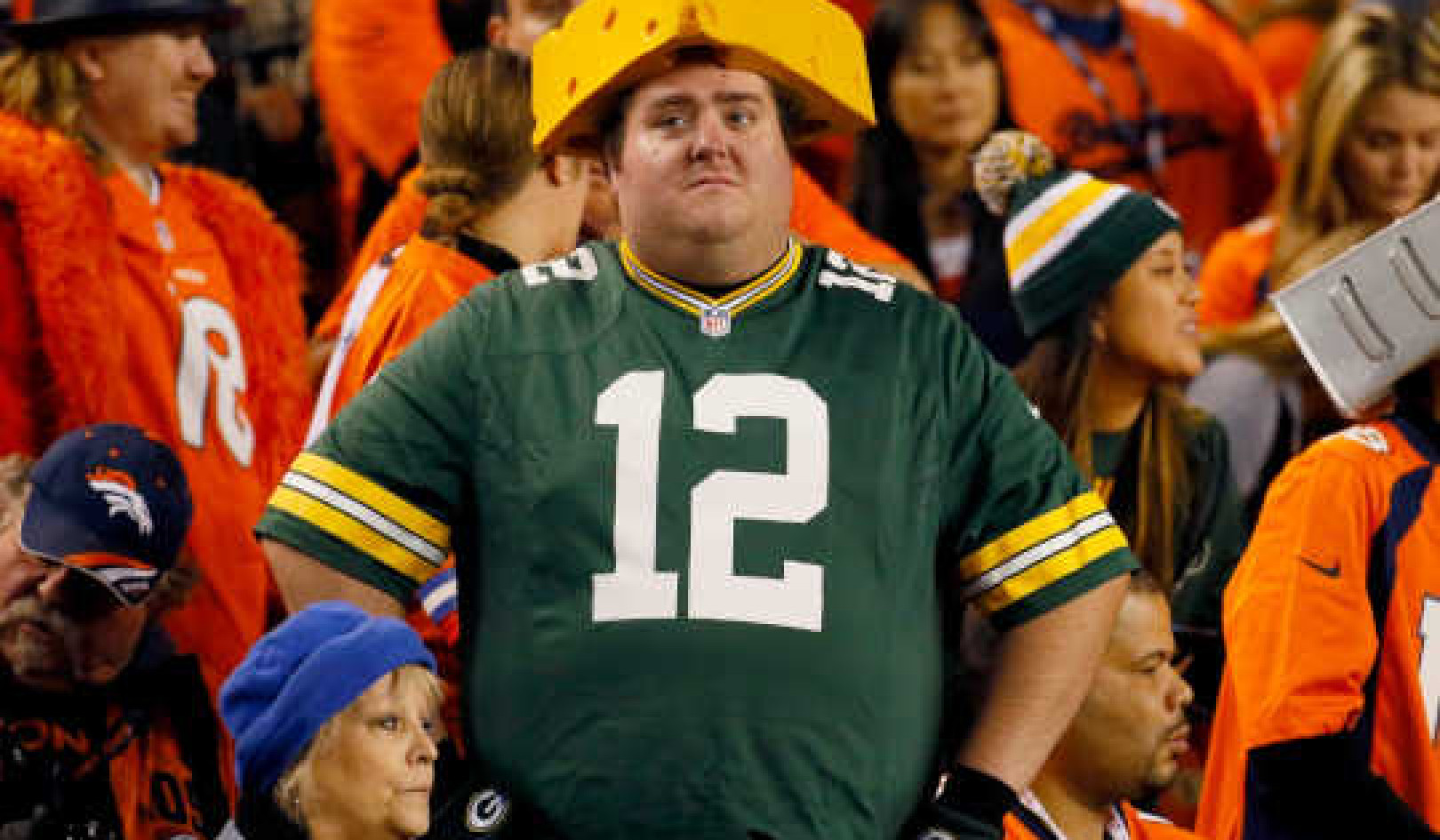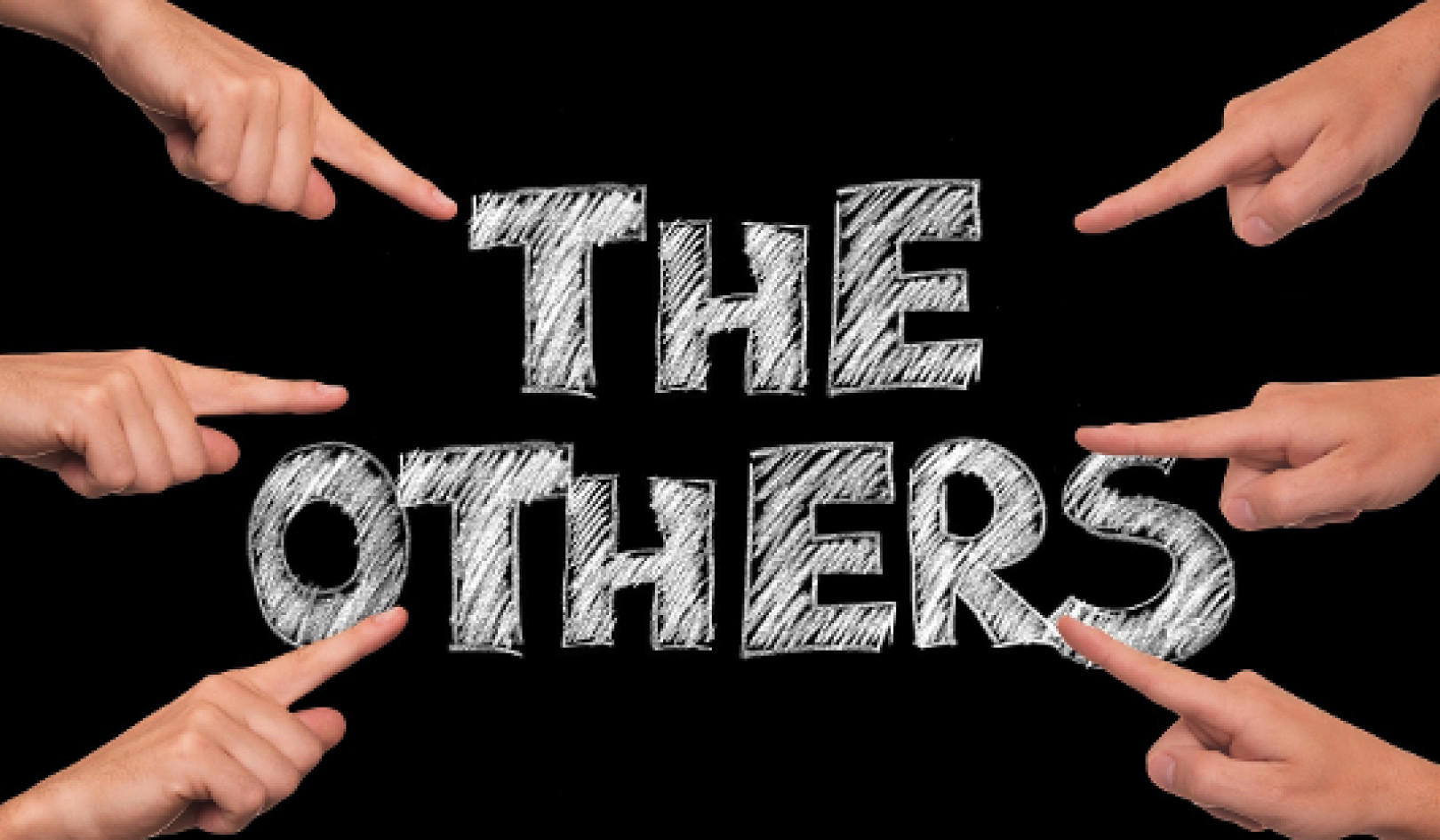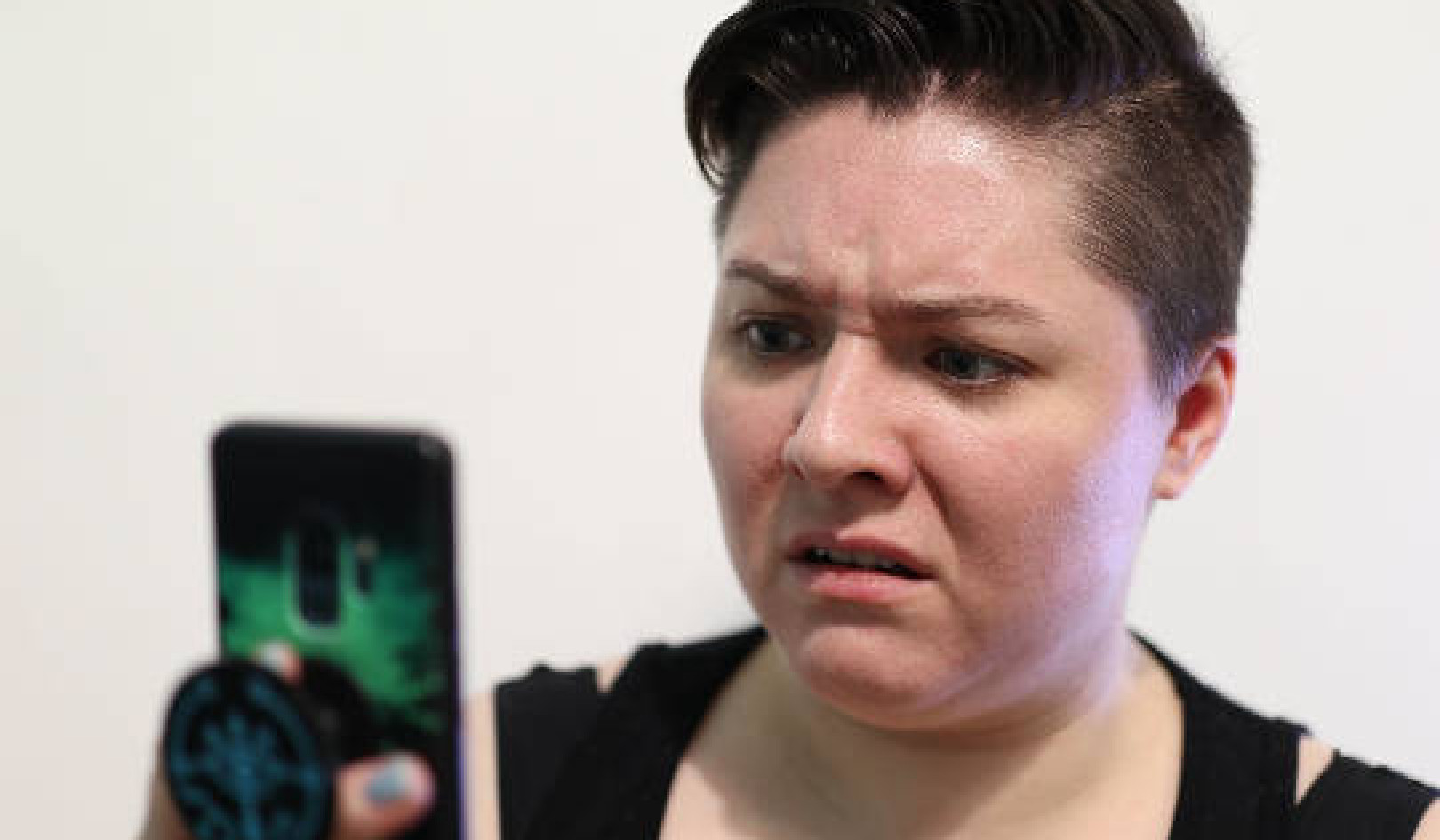Identity can compel you to reject the truth – even when you have evidence proving it. We see this today with the US political establishment: Trump supporters can look at two photos of his inauguration and say the largely empty Mall is full.
This problem is far from new. It was particularly pronounced in the Middle Ages, when emerging scientific thinking severely contradicted accepted religious doctrine. Scientists in the late Middle Ages confronted this conflict with surprising results.
Some rejected theories that had been rigorously proved, because the ideas conflicted with Christianity – and therefore their entire worldview. Others looked at these contradictory ideas – scientific and Christian – and somehow accepted both. European society was religious, and its outlook was Christian. What were scientists to do when faced with a convincing theory, such as that the world was eternal, if for a Christian the truth was creation? As scientists, they regarded the theory as true scientifically, but as Christians, they believed in creation.
Historians call this phenomenon the “double truth”. In medieval times, the double truth preserved conflicting scientist and Christian identities, and participation in society’s Christian consensus. Today, someone in this position might from a scientific standpoint accept Darwin’s theory of evolution, but also, according to their faith, God’s making Adam out of dust, and Eve from Adam’s rib.
A tight tension
The problem in medieval times arose during the Aristotelian scientific revolution of the 13th century. Books by Aristotle, newly translated into Latin, had established a new and valuable science. Works such as Physics and On the Soul set out convincing principles explaining how the world and human mind worked.
Added to these were books interpreting their ideas by great thinkers from the Muslim world – the Andalucians Averroes and Maimonides, a Jewish rabbi, and the Persian Avicenna. They grappled with the same scientific issues, and with the faith-reason problem.
Averroes became famous in Europe for supporting Aristotle’s theory on the world’s eternity, and for his own theory on the human soul, which went beyond Aristotle. He claimed that all human beings shared a single intellect. That is, each human being had a piece of this “intellective soul”, but only for their lifetime. When the body died, the soul merged with the rest of the intellect. For Christians – and for that matter also for Muslims – this meant the soul had no afterlife, no judgement by God, and no future in heaven or hell.
Christian academics who embraced Aristotelian science even where it trespassed on religion were scornfully labelled “Averroists” by their colleagues. The heart of this controversy was the University of Paris. Here there was deep study and debate of “natural philosophy”, the Aristotelian science. This was also the main centre of theological study, where the greatest theologians of the time earned their degrees and taught. Before studying theology, students had a full course of natural philosophy. So Paris was a centre of specialists on science and theology, and many academics were experts on both. If anything, this dual expertise only made their problem worse.
Handling the truth
As critical thinkers, some of them had to accept that, scientifically, theories like the “eternity of the world” were convincing – or at least impossible to disprove. But as Christians, they were reluctant to accept anything that could deny their beliefs, including that of the creation, the production of the world at the beginning of time.
Some scholars chose to present their opinions in such convoluted ways that only close examination revealed that they accepted the science. Some called the theories heretical. The ideas were not, in fact, heretical (they had never been condemned by a pope or Church council). But that people said this shows tensions ran high.
Oddly, those who called the theories heretical were not necessarily conservative thinkers who rejected them. Even the Averroist Boethius of Dacia used the word. In a treatise on the eternity of the world, Boethius argued in favour of Aristotle’s theory, saying it was scientifically sound and true, and that this was the conclusion a physicist necessarily had to hold. Yet in the same breath, he said this view was heretical. In fact, he called the theory and its adherents “heretical” six times in the treatise.
What was he doing? As a scientist, he agreed with Aristotle, but as a Christian he believed in creation. Although he felt both were true, creation, he said, was a “higher truth”. While this may have been what he honestly believed, in the sensitive climate he worked in he was also protecting himself. Yet could calling Aristotle’s theory true but “heretical” and creation a “higher truth” protect him from attack?
Tensions mount
As if tensions needed further inflaming, the university was under direct authority of the bishop of Paris, and in 1277 Bishop Etienne Tempier cracked down on Aristotelian science, issuing a decree banning an astounding 219 principles. Professors teaching these ideas would be excommunicated. Even students hearing them in class would be excommunicated if they did not report their teachers within a week.
Highlighted in the decree’s introduction was a prohibition against holding one “truth” according to science and a contradictory one according to religion. The “double truth” had been condemned.
These rules would be in place for decades, and in the 1290s theologian Godfrey of Fontaines remarked bitterly that they had stifled free scientific exploration.
Boethius of Dacia’s career stopped at this point, and we know no more about him. Was he guilty of the double truth? He did not equate scientific and divine truth, but held that religious truth was higher. Strictly speaking, this avoided the double truth, but the bishop of Paris would not have seen it this way. Nor would he have accepted the position of many less radical philosophers like Thomas Aquinas: if you had asked any of these scientists whether they believed in creation, they would have confirmed this belief without hesitating, even though they thought Aristotle’s theory was scientifically possible.
![]() Views like theirs and Boethius’s were positions the bishop would have rejected as quibbles. When he outlawed the double truth in 1277, he made it hard to be both a scientist and a Christian – and for several decades after, science was fractured.
Views like theirs and Boethius’s were positions the bishop would have rejected as quibbles. When he outlawed the double truth in 1277, he made it hard to be both a scientist and a Christian – and for several decades after, science was fractured.
About The Author
Ann Giletti, Marie Curie Fellow, University of Oxford
This article was originally published on The Conversation. Read the original article.
Related Books:
at InnerSelf Market and Amazon


